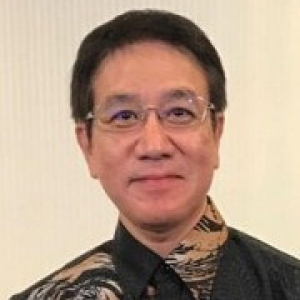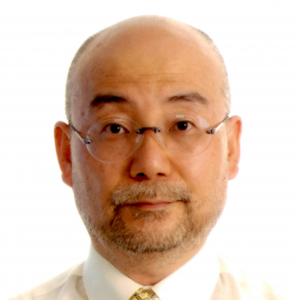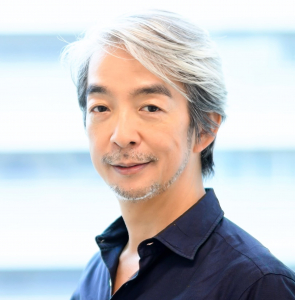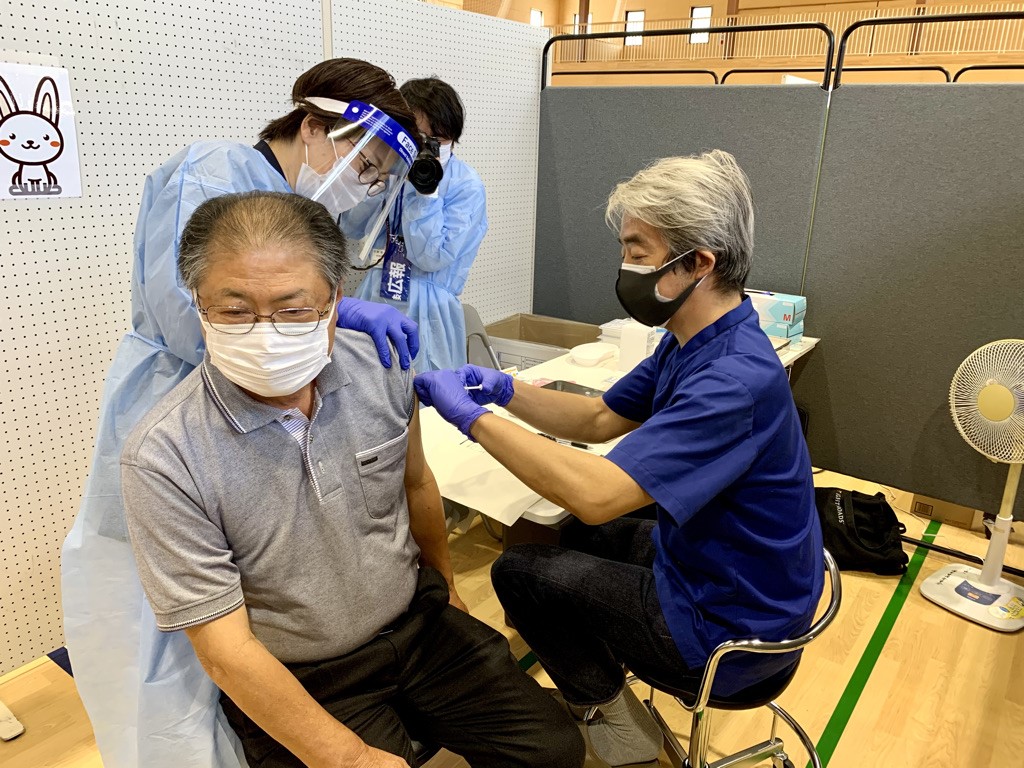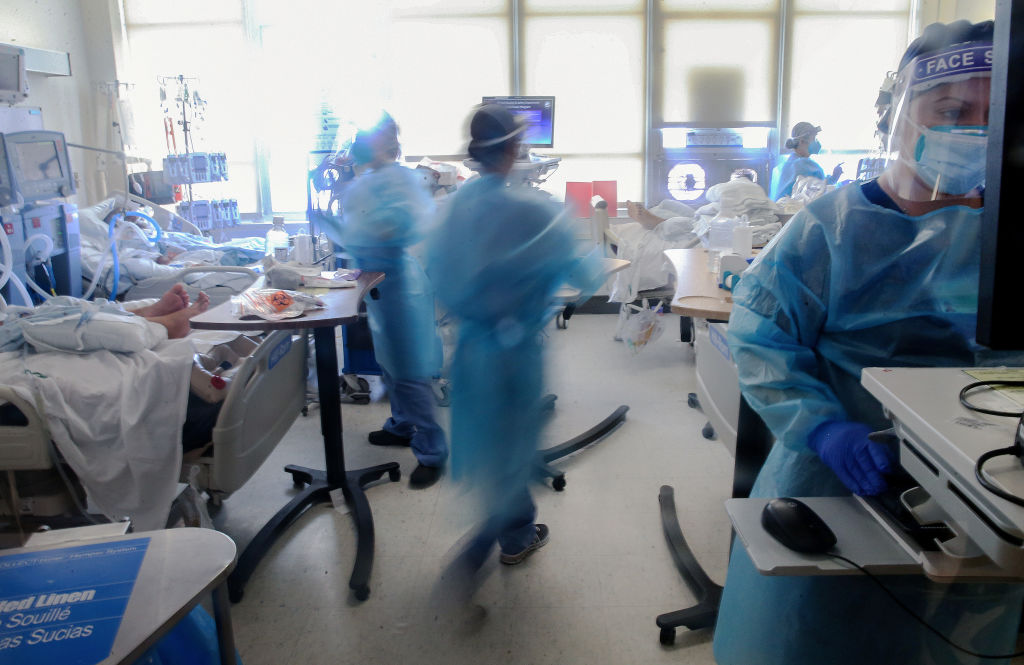
Shortage of Doctors at the Root of Japan’s COVID Hospital Crisis
November 15, 2022
R-2022-057E
A shortage of medical staff is the single biggest factor behind the breakdown of hospital care during the COVID-19 pandemic in Japan, according to an analysis by Foundation researchers, who urge an increase in med school enrollment and other policy reforms.
* * *
Fragility Amid Abundance
Japan’s health-care system has been plagued by numerous failures since the COVID-19 pandemic hit in early 2020. With their capacity already overstretched, hospitals were often obliged to turn ambulances away, and many high-risk individuals were unable to get inpatient care. In August 2021, when the Delta variant was sweeping the country, more than 200 COVID-19 patients died at home while waiting to be hospitalized.[1] In addition, many non-COVID patients in need of urgent medical attention were unable to secure hospital beds, leading to an increase in excess deaths in the first half of 2022. What was the cause of this breakdown, and how can we prevent similar problems in the future?
Insufficient capacity is generally cited as the main cause of these breakdowns in Japan’s health-care system. But the problem is not a shortage of facilities. No other developed country comes close to Japan in terms of the number of acute-care hospital beds per 1,000 population.[2] Even in Tokyo, which was hit hardest by the pandemic, only 70% of the beds set aside for COVID patients were occupied when hospitalizations were at their peak.[3]
Moreover, during the peak of the pandemic, only approximately 5% of all acute-care beds nationwide (38,866 of 897,356) were used for COVID patients.[4] Patients hospitalized with COVID-19 at “advanced treatment hospitals”—university, public, and other large hospitals offering state-of-the-art medical care—amounted to at most 10% of the acute-care beds in these top-tier facilities. (At major US hospitals like Massachusetts General Hospital, the corresponding figure was typically about 25%.)
A common measure of the resilience of a society’s hospitals is surge capacity—the ability to maintain quality of care amid a sudden, unexpected increase in patient volume, such as that caused by an epidemic or other health-care crisis. Health-care systems with low surge capacity are easily overwhelmed by emergencies like the COVID pandemic. But why should this occur in Japan, where hospital beds are so plentiful?
Focus on the Medical Workforce
The pandemic revealed the inability of Japanese hospitals to handle an unusual influx of patients despite the availability of hospital beds. At the heart of the problem is a shortage of medical personnel. The ratio of hospital physicians to beds is particularly low in Japan compared with most developed countries. Britain has 108.1 hospital physicians for every 100 beds, the United States has 93.5, Germany 51.9, France 51.8, and Japan just 18.5.[5] Others have already commented on this problem and the need to address it.[6] Our study sought to clarify the quantitative relationship between the supply of hospital doctors and surge capacity.
Because COVID-19 patients are internal-medicine patients, hospitals’ internal medicine departments came under the greatest stress during the pandemic. With this in mind, we explored the relationship between the number of hospital internists and the number of internal-medicine patients admitted to hospitals. Focusing on certified teaching hospitals in three prefectures experiencing high rates of COVID-19 infection—Tokyo, Osaka, and Okinawa—we analyzed the relationship between the number of staff internists (including attending physicians and residents) and admissions of internal medicine patients brought by ambulance during the period from April 2020 to March 2021. Our data comes from the statistical tables for certified Japanese teaching hospitals carried in the December 2021 issue of the Journal of the Japanese Society of Internal Medicine (in Japanese).
For purposes of analysis, the facilities surveyed were broadly classified as either community hospitals or university hospitals, with the former consisting of (non-academic) private, public, and quasi-public hospitals. Public hospitals are hospitals run by a national or local government entity, while quasi-public hospitals are hospitals run by major nonprofit health-care organizations like the Japanese Red Cross Society and Saiseikai.
Hospitals with More Residents Admit More Patients
Reviewing data from 108 out of the 117 teaching hospitals in the three above-mentioned prefectures (83 community hospitals and 25 university hospitals), we found that a total of 102,400 internal-medicine patients were admitted during the year under study. Private hospitals had the highest mean rate of annual admissions (290 per 100 beds), followed by public hospitals (227), quasi-public hospitals (201), and university hospitals (94). Analyzing the relationship between the ratio of hospital internists to beds and the rate of internal-medicine admissions, we found that, at community hospitals, a larger number of residents correlated with higher admission rates. Specifically, for each additional resident per 100 beds, the average number of admissions per 100 beds increased by 11.6.
The fact that hospitals with more residents per 100 beds have higher admission rates also means that the hospitals with low admission rates have a shortage of residents. Even before the pandemic, Japan was experiencing a serious shortage of attending physicians and nurses.[7] Our analysis shows that, at least in relation to the pandemic, residents have also been in short supply.
Increasing the number of medical workers in Japan is the surest way to boost the system’s surge capacity, improve its resilience, and save more lives. Although the overall number of physicians in Japan has been on the rise in recent years,[8] the number of internists has been falling.[9] To meet the demand for internal-medicine inpatient care, including that of high-risk COVID-19 patients, it is vital that we increase the number of internists.
As a long-term strategy, we need to expand enrollment in our medical schools, not only to build the resilience of the health-care system in the event of a pandemic but also to enhance health-care services and meet the growing needs of our super-aging society. Medicine has emerged as an increasingly popular profession among Japanese high school students of late, but because enrollment is limited, the acceptance rate is very low.[10] At present, Japan’s total medical school enrollment as a percentage of the population is only about half the average in the developed world. Given the growing demand for a medical education among Japanese youths, universities should have no difficulty securing a larger number of qualified applicants.
Boost Medical Staff to Ease Strains on the System
In Japan, ambulance transport is provided by local governments at no cost to users. During pandemic surges, hospitals were inundated with patients who called for an ambulance—even when many of them were not in need of inpatient care. Using their authority under the Infectious Disease Control Act, prefectural and municipal governments tried to impose control over which COVID patients and suspected patients were admitted for hospitalization. Patients requiring oxygen therapy were given top priority, but those at high risk for death were also eligible.
In general, Japanese hospitals are permitted to turn a patient away when contacted by an ambulance crew. The most common reasons for refusal are that the acute-care unit is full or that there are not enough medical personnel (doctors and nurses) to provide care. The fact that only 70% of acute-care beds in Tokyo were occupied even when COVID hospitalizations hit their peak indicates that the main reason for turning ambulances away was a lack of medical staff. The shortage of hospital personnel was greatly exacerbated during the pandemic, when many workers, too, were either infected or identified as being in close contact with infected persons and were thus obliged to isolate or quarantine at home.
Under the Infectious Diseases Control Act, regional medical care support hospitals and advanced treatment hospitals are required to ensure the availability of a substantial number of beds in preparation for a surge of patients during a pandemic. The prefectural governments are in a position to negotiate the numbers with individual institutions, but in practice, it has fallen to each facility to allocate COVID-19 beds on the basis of its own capacity. As we have seen, each hospital’s ability to handle a surge in patients during the peak of the pandemic depended on the availability of medical personnel. Given the nationwide shortage of medical workers, it was impossible for hospitals to increase their surge capacity. Because of this limitation, many patients were obliged to receive care at home, in hotels, or in makeshift medical facilities, and in some cases severely ill non-COVID patients were unable to receive inpatient care.
Give Hospitals an Adequate Workforce—Not Penalties
At the time of this writing on October 10, 2022, the Japanese government was planning to enact legislation that would allow authorities to revoke the status of advanced treatment hospitals and regional medical care support hospitals that fail to honor their prior commitments to the prefectural government regarding the admission of COVID-19 patients. We would strongly advise against penalizing hospitals that are laboring under medical staff shortages. Such a penalty would only lead to a further exodus of medical personnel. At a time like this, revocation of special status could force private hospitals into bankruptcy. Hospitals should not be penalized for limiting admissions but instead provided with the staffing they need.
Of course, increasing the number of medical workers is not the only reform needed to improve the resilience of our health-care system. Two other key challenges are strengthening the function of primary-care physicians and digitalizing the community-based integrated health-care system. The first task means demanding accountability of primary-care physicians and placing them at the center of care. The second means using cutting-edge digital technology to control patient flow efficiently and responsively. We should also provide hospital doctors with incentives to acquire general-care skills (such as a Japanese version of hospitalist board certification), thereby increasing the number of physicians equipped to treat patients in a pandemic.
At the very least, addressing the medical workforce shortage should help boost admissions at community hospitals. As a long-term policy measure, the government should take steps to expand the enrollment quota for medical schools. We recommend increasing overall enrollment to roughly the same level (relative to population) found on average in other developed countries.
[1] “250 People Who Died Outside Medical Facilities in Aug. Had COVID, New High: Japan Police,” Mainichi, September 14, 2021, https://mainichi.jp/english/articles/20210914/p2a/ 00m/0na/002000c.
[2] According to OECD figures, in 2020 Japan ranked number one with 7.1 beds per 1,000 population, Germany ranked second with 4.95, and Austria ranked third with 4.64. See OECD Statistics, https://stats.oecd.org/Index.aspx?ThemeTreeId%20=%209.
[3] Ministry of Health, Labor, and Welfare, “Shingata koronawirusu kansensho kanja no ryoyo jokyo, byoshosu to ni kansuru chosa kekka (2021 8-gatsu 25-nichi 0-ji jiten)” (Results of the Survey on the Treatment of Patients Infected by COVID-19, Hospital Beds, etc. [as of 12:00 a.m. on August 25, 2021]), https://www.mhlw.go.jp/content/10900000/000872222.pdf.
[4] Ministry of Health, Labor and Welfare, “Sanko: 2021-nen no byosho kino goto no byosho su” (Reference: Number of Beds per Function of Beds in 2021), https://www.mhlw.go.jp/content/10800000/000955093.pdf; Our World in Data, “Coronavirus (COVID-19) Hospitalizations,” https://ourworldindata.org/covid-hospitalizations#how-many-people-are-in-hospital-due-to-covid-19-at-a-given-time.
[5] OECD Health Statistics, www.oecd-ilibrary.org/social-issues-migration-health/data/oecd-health-statistics/oecd-health-data-health-care-resources_data-00541-en.
[6] See “It’s Time to Face the Real Risks Posed by COVID-19,” Japan Times, May 24, 2020, https://www.japantimes.co.jp/opinion/2020/05/24/commentary/japan-commentary/time-face-real-risks-posed-covid-19; “Physician-Turned-Politician Works to Bring Doctors to Rural Japan,” Japan Times, April 13, 2016, https://www.japantimes.co.jp/news/2016/04/13/national/social-issues/physician-turned-politician-works-bring-doctors-rural-japan; and Tokyo Medical Practitioners Association, “Ishisu o fuyashi, Rokiho junshu no ‘ishi no hatarakikata kaikaku’ o yobo shimasu” (A Call to Increase the Number of Doctors and Implement a “Work-style Reform for Doctors” in Compliance with the Labor Standards Law), https://www.hokeni.org/docs/2018031600036/.
[7] See “Drive to Boost Medical Workforce Numbers Continues to Stall,” BMJ, January 7, 2022, https://www.bmj.com/content/376/bmj.o26; Timothy M. Dall et al., “An Aging Population and Growing Disease Burden Will Require a Large and Specialized Health Care Workforce by 2025,” Health Affairs, vol. 32, no. 11 (November 2013); and Harris Ahmed and J. Bryan Carmody, “On the Looming Physician Shortage and Strategic Expansion of Graduate Medical Education,” Cureus, vol. 12, no. 7 (July 15, 2020).
[8] Japan Medical Association, “Number of Physicians in Japan and Proportion of JMA Membership (1982–2018),” https://www.med.or.jp/english/about_JMA/physicians.html.
[9] Statista, “Number of General Hospitals with Internal Medicine Departments in Japan from 2014 to 2019,” https://www.statista.com/statistics /1077031/japan-number-of-internal-medicine-departments/.
[10] Ministry of Education, Culture, Sports, Science and Technology, “Gakko kihon chosa” (Basic Survey of Schools), http://www.mext.go.jp/b_menu/toukei/chousa01/kihon/1267995.htm.
